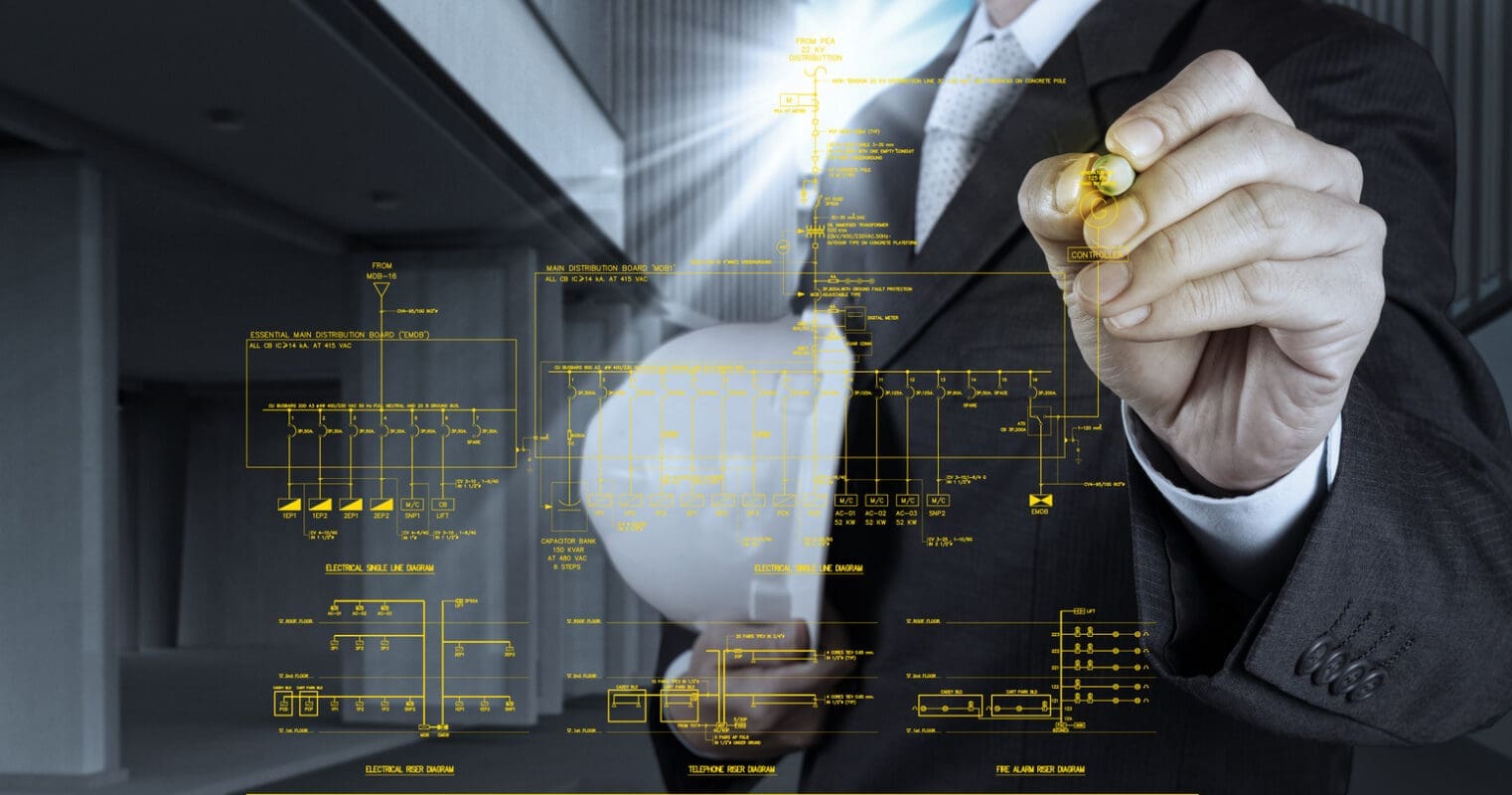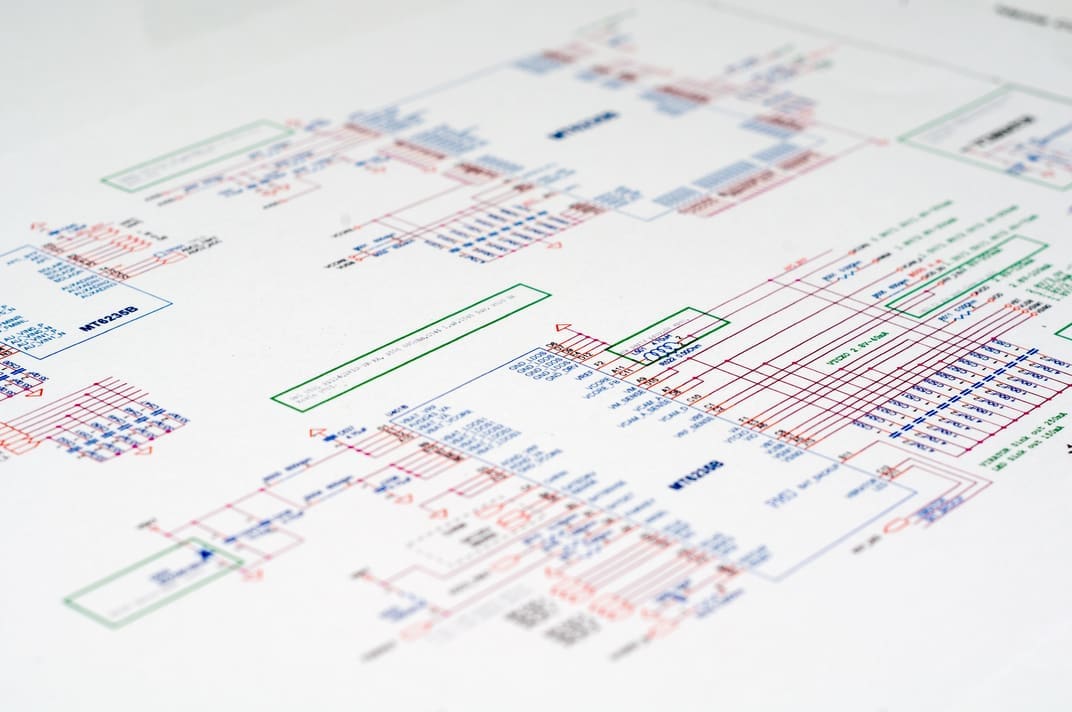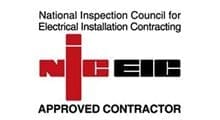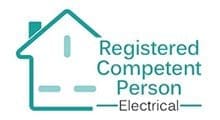Domestic, Commercial & Industrial Electrical Design Engineers
For Electrical Design services, why choose Safe Electric?
- Cost – Scope – Safety – Compliance – Quality
Each of these will be considered as we put together your bespoke Electrical Design packages – we’ll match every element to your individual needs. - From concept through design and installation, our skilled and experienced team will be here to support you at every stage.
- We use software specialist software, such as ModeCsoft, to construct single-line diagrams and block cable diagrams to create cable calculation modes, selectivity studies, and client-specific connection drawings. We use complete design calculations as proof of concept.

Design Investigation
We vary our approach to design research depending on the nature of the project. We complement all research with in-depth technical papers that we use to help determine the viability of future projects.
Our trained technicians have decades of installation knowledge, which allows them to quickly grasp your needs, to plan, and to foresee complications before they arise.
Each of our engineers is well-versed in LV Electrical Systems and have the necessary certifications in health and safety, including the most recent 18th Edition Wiring Regulations.
Our fully qualified, skilled team will work with you to define the needs and parameters of your project. They are well-placed to identify the best practical and cost-effective solution for your domestic or commercial premises.
We’ll then use our years of experience and know-how to develop a unique and creative electrical design.
Our committed team will carefully collaborate with you to define the needs and parameters of your project before developing a unique and creative electrical design approach based on years of expertise.
Our fully certified engineers provide a totally bespoke electrical design service, and they are all committed to identifying the best practical and cost-effective solution for your domestic or commercial premises. Early on, a thorough investigation allows us to thoroughly and properly ascertain your unique needs and produce a customised design, equipped with detailed schematic drawings and a project estimate.
We supply and install
- Individual items.
- Electrical design and verification including cable sizing.
- Low voltage cable installation design criteria.
- Total turnkey solutions from design through to Electrical Schematics
Our experts consists of:
- Approved Technicians & Electricians
- NICEIC Approved Contractors
- Inspection and Testing Engineers
- Electrical Design Engineers
- Commissioning Engineers
Our Accreditations
What are Electrical Schematics?
Electrical schematics are a type of diagram that provides a visual representation of an electrical system. They are a subset of electrical design. We use them to show the physical arrangement and connections of all the components in a circuit.
The primary goal of a circuit diagram is to clearly illustrate how each part of the circuit is interconnected. A well-drawn schematic helps to describe the operation of an electrical circuit and serves as a reference point for building and troubleshooting the system. By using symbols to represent each component, electrical schematics can provide a clear and concise representation of complex electrical systems.
The fundamental goal of a circuit diagram is to clearly demonstrate the physical arrangement and interconnection of all of the parts of a circuit. A properly drawn schematic describes the operation of an electrical circuit and serves as a starting point for system construction and troubleshooting.
Electrical Schematics are an essential tool for professionals in the electrical engineering field. They are used in a wide range of industries, including manufacturing, telecommunications, and transportation.


FAQ's
The key components of an electrical design include:
- Power source: This is the component that supplies electricity to the system. It can be a battery, generator, or a direct connection to the grid.
- Wiring: This includes all the conductive material used to connect the various components of the system. The wiring must be designed to handle the appropriate voltage and current levels and to minimize losses due to resistance.
- Switches and controls: These components are used to turn the system on and off and to regulate the flow of electricity through the system.
- Protection devices: These components protect the system from overloads, short circuits, and other electrical faults that could damage the system or cause safety hazards.
- Loads: These are the devices that consume electricity in the system, such as motors, lights, and appliances.
The design of these components and their integration into the system can impact performance and reliability in several ways. For example:
- Properly sizing the power source and wiring can ensure that the system has enough capacity to meet the electrical demand of the loads while minimizing losses and reducing the risk of equipment damage or failure.
- Appropriate protection devices can prevent damage to the system and improve safety.
- Well-designed switches and controls can improve system efficiency and reduce energy waste.
- The selection of high-quality components and appropriate installation techniques can improve system reliability and reduce the need for maintenance and repairs.
Electrical System Design Services can help businesses optimize energy usage and reduce costs in several ways:
- Energy Audits: Electrical system design services can conduct energy audits to evaluate the energy usage patterns of the business and identify areas where energy can be saved. These audits can include identifying areas where energy is being wasted, such as inefficient lighting, outdated equipment, and other inefficiencies in the system.
- Design Efficiency: Electrical system design services can optimize the design of the electrical system to improve efficiency and reduce energy consumption. This can include the selection of more energy-efficient components, the use of alternative energy sources, and the integration of smart controls and automation to better manage energy usage.
- Load Balancing: Electrical system design services can also help businesses optimize their electrical system by balancing the load across the system, ensuring that energy is distributed evenly and efficiently throughout the business. This can reduce the risk of overloading the system and improve overall efficiency.
- Renewable Energy: Electrical system design services can also help businesses transition to renewable energy sources such as solar or wind power. This can not only reduce energy costs but also promote sustainability and reduce the business’s carbon footprint.
- Maintenance: Regular maintenance of the electrical system can also improve efficiency and reduce energy costs. Electrical system design services can provide maintenance services that can help identify and fix any inefficiencies in the system.
Overall, electrical system design services can provide businesses with a comprehensive approach to reducing energy usage and costs, improving efficiency, and promoting sustainability.
When selecting an Electrical System Design Service provider, businesses should consider the following factors:
- Experience and expertise: The service provider should have a proven track record of successfully designing electrical systems for businesses in the same industry or with similar needs. They should have a team of qualified and experienced engineers who are knowledgeable in the latest technologies and standards.
- Reputation and customer reviews: It’s important to check the service provider’s reputation by reviewing customer testimonials and online reviews. This can provide insight into the quality of their services, reliability, and customer satisfaction.
- Range of services: The service provider should offer a comprehensive range of services, including electrical system design, installation, maintenance, and support. This ensures that the business can receive ongoing support and assistance as its needs change over time.
- Compliance and safety standards: The service provider should be knowledgeable about local and national regulations related to electrical system design and installation, as well as safety standards. They should be able to ensure that the system is designed and installed in compliance with all relevant regulations and standards.
- Cost: The service provider’s pricing should be competitive and transparent. The business should be provided with a detailed quote that includes all costs associated with the project.
Common pitfalls to avoid when selecting an Electrical System Design Service provider include:
- Choosing a provider based solely on price: While cost is an important factor, choosing a provider solely based on price can lead to poor-quality services, delays, and unexpected costs down the line.
- Failing to consider experience and expertise: Choosing a provider with little experience or expertise can lead to design errors, inefficiencies, and costly mistakes.
- Not checking references or customer reviews: Failing to check references or customer reviews can result in selecting a provider with a poor reputation and low customer satisfaction.
- Ignoring compliance and safety standards: Not ensuring that the provider is knowledgeable about compliance and safety standards can lead to legal and safety issues down the line.
- Choosing a provider that offers limited services: Selecting a provider that offers limited services can lead to additional costs and delays if the business needs additional services in the future.
There have been several advancements in electrical system design that can benefit businesses in many ways. Some of the latest advancements include:
- Smart Controls and Automation: Smart controls and automation have become increasingly popular in electrical system design. These technologies use sensors, actuators, and software to automatically manage and optimize energy usage, reducing energy waste and improving efficiency.
- Energy Storage Systems: Energy storage systems have become more efficient and cost-effective, allowing businesses to store excess energy during low-demand periods and use it during high-demand periods. This can help businesses reduce their reliance on the grid and lower their energy costs.
- Renewable Energy Integration: The integration of renewable energy sources, such as solar or wind power, has become more popular and cost-effective. This can not only reduce energy costs but also promote sustainability and reduce the business’s carbon footprint.
- Electric Vehicle Charging Stations: The increasing popularity of electric vehicles has led to the development of electric vehicle charging stations. These stations can be installed in commercial buildings, parking lots, and other areas, providing an additional revenue stream for businesses and promoting sustainability.
- Internet of Things (IoT) Integration: IoT integration has become more common in electrical system design, allowing businesses to monitor and control their energy usage remotely. This can improve energy management and reduce costs by identifying and addressing inefficiencies in real-time.
These advancements in electrical system design can benefit businesses in many ways, including:
- Lower energy costs through improved efficiency and energy management
- Improved reliability and reduced downtime through the use of smart controls and automation
- Increased sustainability and reduced carbon footprint through the integration of renewable energy sources
- Additional revenue streams through the installation of electric vehicle charging stations.
- Improved safety and compliance with the latest regulations and standards.
Overall, businesses that adopt the latest advancements in electrical system design can improve their bottom line, promote sustainability, and stay ahead of the competition.
Electrical system design services in the UK ensure compliance with safety regulations and industry standards through several measures. Here are some of the ways they achieve compliance:
- Adhering to the Electricity at Work Regulations: The Electricity at Work Regulations 1989 is a set of regulations that govern electrical systems’ design, construction, operation, and maintenance in the UK. Electrical system design services in the UK must comply with these regulations to ensure that the system is safe and reliable.
- Following the British Standards: Electrical system design services in the UK must follow the British Standards (BS) for electrical installations, which provide detailed guidance on electrical installations’ design, construction, and maintenance. The most commonly used British Standards for electrical installations in the UK are BS 7671 (IET Wiring Regulations) and BS EN 61439 (Low-voltage switchgear and control gear assemblies).
- Employing qualified personnel: Electrical system design services in the UK employ qualified personnel who are trained and competent in electrical system design, installation, testing, and maintenance. These personnel may include electrical engineers, electricians, and technicians.
- Using high-quality materials and components: Electrical system design services in the UK use high-quality materials and components that meet or exceed industry standards. This ensures that the system is safe and reliable.
- Conducting regular inspections and testing: Electrical system design services in the UK conduct regular inspections and testing of the electrical system to ensure that it remains safe and compliant with regulations and standards. This includes periodic inspections of the system, electrical testing, and thermal imaging inspections.
- Providing ongoing maintenance and support: Electrical system design services in the UK provide ongoing maintenance and support to ensure that the system continues to operate safely and efficiently. This includes regular inspections, testing, and repairs as needed.
By following these measures, electrical system design services in the UK can ensure that the system is designed, installed, and maintained safely and in compliance with all relevant regulations and industry standards.
In electrical system design, several types of testing and verification processes are typically used to ensure system performance and reliability in the UK. These include:
- Functional testing: Functional testing involves testing the electrical system’s components and subsystems to ensure that they operate as intended. This testing is typically conducted during the installation phase to ensure that the system performs as expected.
- Acceptance testing: Acceptance testing is conducted after the system is installed to ensure that it meets the design specifications and requirements. This testing includes verifying the system’s functionality, checking its performance under various load conditions, and conducting electrical testing to ensure that it is safe and compliant with regulations and standards.
- Commissioning testing: Commissioning testing is conducted after acceptance testing to ensure that the system operates reliably and efficiently over time. This testing includes verifying the system’s performance under different operating conditions, testing its response to various fault scenarios, and conducting ongoing maintenance and testing to ensure that the system remains safe and reliable.
- Thermal imaging: Thermal imaging is a non-invasive method used to identify potential electrical system faults and hazards. This testing involves using a thermal imaging camera to detect hot spots, which may indicate electrical faults or overheating.
- Insulation resistance testing: Insulation resistance testing is used to verify the electrical insulation of the system’s components and subsystems. This testing involves applying a high voltage to the system and measuring the current flowing through it to detect any insulation failures or defects.
- Power quality testing: Power quality testing is conducted to ensure that the electrical system is delivering high-quality power to the loads. This testing involves measuring various power parameters, such as voltage, current, and frequency, and identifying any issues that may affect the system’s performance.
By using these testing and verification processes, electrical system design services in the UK can ensure that the system is designed, installed, and maintained safely and in compliance with all relevant regulations and industry standards.
Electrical System Design Services can help businesses in the UK integrate renewable energy sources and reduce their carbon footprint in several ways:
- Assessing the feasibility of renewable energy sources: Electrical System Design Services can assess the feasibility of renewable energy sources such as solar, wind, and biomass to determine if they are suitable for a particular business. This assessment considers factors such as location, energy requirements, and budget.
- Designing renewable energy systems: Electrical System Design Services can design renewable energy systems that meet a business’s specific energy needs. This includes designing solar panel arrays, wind turbines, or biomass boilers that can generate renewable energy to supplement the business’s existing power supply.
- Integrating renewable energy systems with existing power infrastructure: Electrical System Design Services can integrate renewable energy systems with a business’s existing power infrastructure. This includes designing and installing inverters, transformers, and other components that ensure a seamless integration of renewable energy with the existing power system.
- Ensuring compliance with regulatory requirements: Electrical System Design Services can ensure that renewable energy systems comply with regulatory requirements, such as building codes and safety standards, as well as industry standards such as the Microgeneration Certification Scheme (MCS).
- Providing ongoing maintenance and support: Electrical System Design Services can provide ongoing maintenance and support for renewable energy systems, including regular inspections, testing, and repairs. This ensures that the systems continue to operate safely and efficiently.
By working with Electrical System Design Services to integrate renewable energy sources, businesses in the UK can reduce their carbon footprint and energy costs while improving their environmental sustainability. Additionally, businesses can demonstrate their commitment to sustainable practices, which can have positive effects on their brand image and reputation.
Electrical system design can present various challenges, and some of the most common ones include:
- Compliance with regulations: Electrical systems must comply with various safety and regulatory requirements, such as the BS 7671 Wiring Regulations. Failure to meet these standards can lead to safety issues, legal liability, and increased costs. To address this challenge, electrical system designers should stay up-to-date with the latest regulations and ensure that their designs comply with these standards.
- Budget constraints: Electrical system design can be costly, and budget constraints can limit the options available for designers. To address this challenge, designers can explore cost-effective solutions, such as energy-efficient components and alternative energy sources, to reduce costs.
- Technical complexity: Electrical system design can be highly technical, and designers must have a strong understanding of electrical engineering principles and technology. To address this challenge, designers can collaborate with other experts and use advanced software tools to simulate and optimize their designs.
- Space constraints: Electrical systems often have to fit within limited spaces, such as in buildings or vehicles. To address this challenge, designers can use compact components and design solutions that optimize space usage while meeting safety requirements.
- Integration with other systems: Electrical systems must often integrate with other systems, such as HVAC or lighting systems. To address this challenge, designers can collaborate with other system designers to ensure that their designs integrate effectively.
In the UK, addressing these challenges requires a combination of technical expertise, collaboration, and adherence to standards and regulations. Electrical system designers can also benefit from ongoing professional development to stay up-to-date with the latest industry trends and best practices. Additionally, a collaboration between government, industry and academic institutions can help address these challenges and promote innovation in electrical system design.
Electrical system design services can provide businesses with a range of benefits that can help improve electrical system efficiency and reduce downtime in the UK. Some of the ways these services can help include:
- Optimizing system design: Electrical system design services can help businesses optimize their system design by analysing the specific requirements and usage patterns of the electrical system. This can result in more efficient and effective designs that meet the needs of the business while minimizing waste.
- Identifying and mitigating potential issues: Electrical system design services can help identify potential issues and vulnerabilities in the system design, such as overloaded circuits or ageing components. By addressing these issues proactively, businesses can reduce the risk of downtime and improve the reliability of their electrical systems.
- Enhancing safety and compliance: Electrical system design services can help businesses ensure that their electrical systems are safe and compliant with relevant regulations and standards. This can help reduce the risk of safety incidents and legal liability.
- Implementing new technologies: Electrical system design services can help businesses identify and implement new technologies, such as energy-efficient components or alternative energy sources. These technologies can help improve system efficiency and reduce energy costs.
- Providing ongoing support and maintenance: Electrical system design services can provide ongoing support and maintenance for businesses, helping to identify and address issues as they arise. This can help minimize downtime and ensure that the electrical system continues to operate at peak efficiency.
In summary, electrical system design services can help businesses improve their electrical system efficiency, reduce downtime, and enhance safety and compliance. By working with experienced professionals and leveraging the latest technologies and best practices, businesses can optimize their electrical systems to meet their unique needs and objectives.
Businesses in the UK can leverage electrical system design to enhance overall system performance, reliability, and safety in several ways. Some of the key strategies include:
- Conduct a thorough analysis: Electrical system design starts with a thorough analysis of the existing system, including its components, usage patterns, and any potential issues or vulnerabilities. This analysis can identify opportunities to optimize the system design and improve performance, reliability, and safety.
- Utilize the latest technology: Electrical system design can incorporate the latest technology and components to enhance performance and reliability. For example, businesses can use smart sensors, energy-efficient components, and automation systems to improve system efficiency and reduce downtime.
- Design for redundancy and backup: Electrical system design can incorporate redundancy and backup systems to ensure that critical systems remain operational even in the event of a failure or outage. This can help minimize downtime and improve overall system reliability.
- Ensure compliance with regulations and standards: Electrical system design must comply with relevant regulations and standards, such as the BS 7671 Wiring Regulations. Adhering to these standards can enhance safety and minimize the risk of legal liability.
- Provide ongoing maintenance and support: Electrical systems require ongoing maintenance and support to ensure they continue to operate at peak efficiency and reliability. Businesses can leverage electrical system design services to provide ongoing support, maintenance, and monitoring to identify and address issues as they arise.
In summary, businesses can leverage electrical system design to enhance overall system performance, reliability, and safety by conducting a thorough analysis, utilizing the latest technology, designing for redundancy and backup, ensuring compliance with regulations and standards, and providing ongoing maintenance and support. By working with experienced professionals, businesses can optimize their electrical systems to meet their unique needs and objectives.
There is a huge difference between an Electrical Designer and an Electrical Engineer. Both have the job of creating a functional electrical system a designer checks all the calculations and selectivity curves and many other things and the electrical engineer uses this information to install a safe system based on the design.
Electrical designers use their knowledge of how electricity flows to draught customised plans for a project’s electrical wiring and power distribution. They take into consideration the electrical requirements of new constructions to determine the most efficient means of providing power. In certain instances, they must consult with the manufacturers of redesigned equipment to find out how to make their products operate while maintaining their electrical safety.
They design an electrical system using CAD and specialised Electrical Design software, taking care to incorporate electrical requirements and drawings.
Electrical engineers work with homeowners, architects, and builders alongside helping utility, communications, and power distribution corporations with public grids and cable routing, to install the systems designed by Electrical Designers, working with them, to ensure the installation is installed safely and conversing with them to ensure any design changes are reflected in the final design information.
Changes on site to the initial design can and do have adverse reactions to an initial design which must be taken into account, or the customer could be paying a heavy penalty in excess charges and losses in cables by using the wrong equipment, which is why it is so important to get your system designed before any work is started.
In single-phase systems it can be costly but in 3-Phase systems not balancing loads can end up with heavy penalty charges from the utility companies and surcharges added to a company’s bills, load analysis is a very important thing to do before altering any system.
Not doing so can cost a company thousands of pounds in surcharges.
























